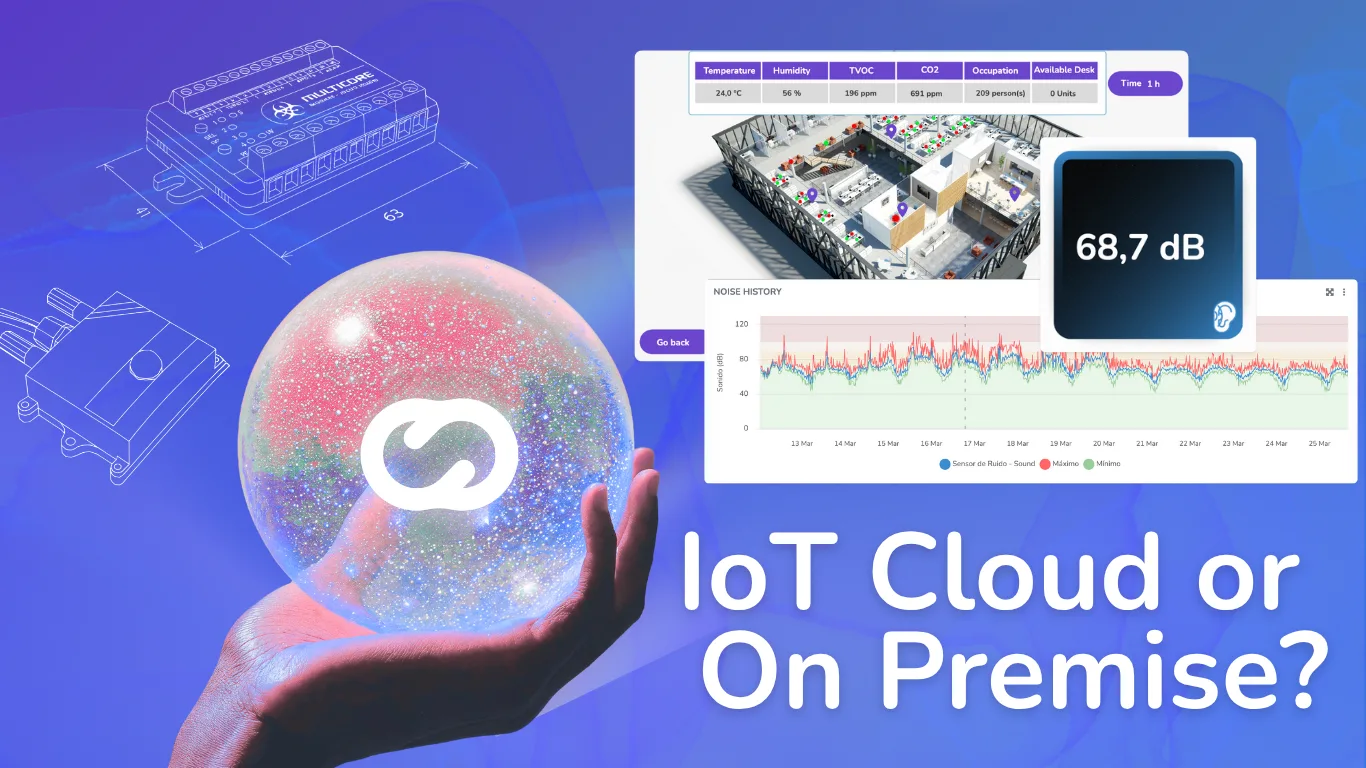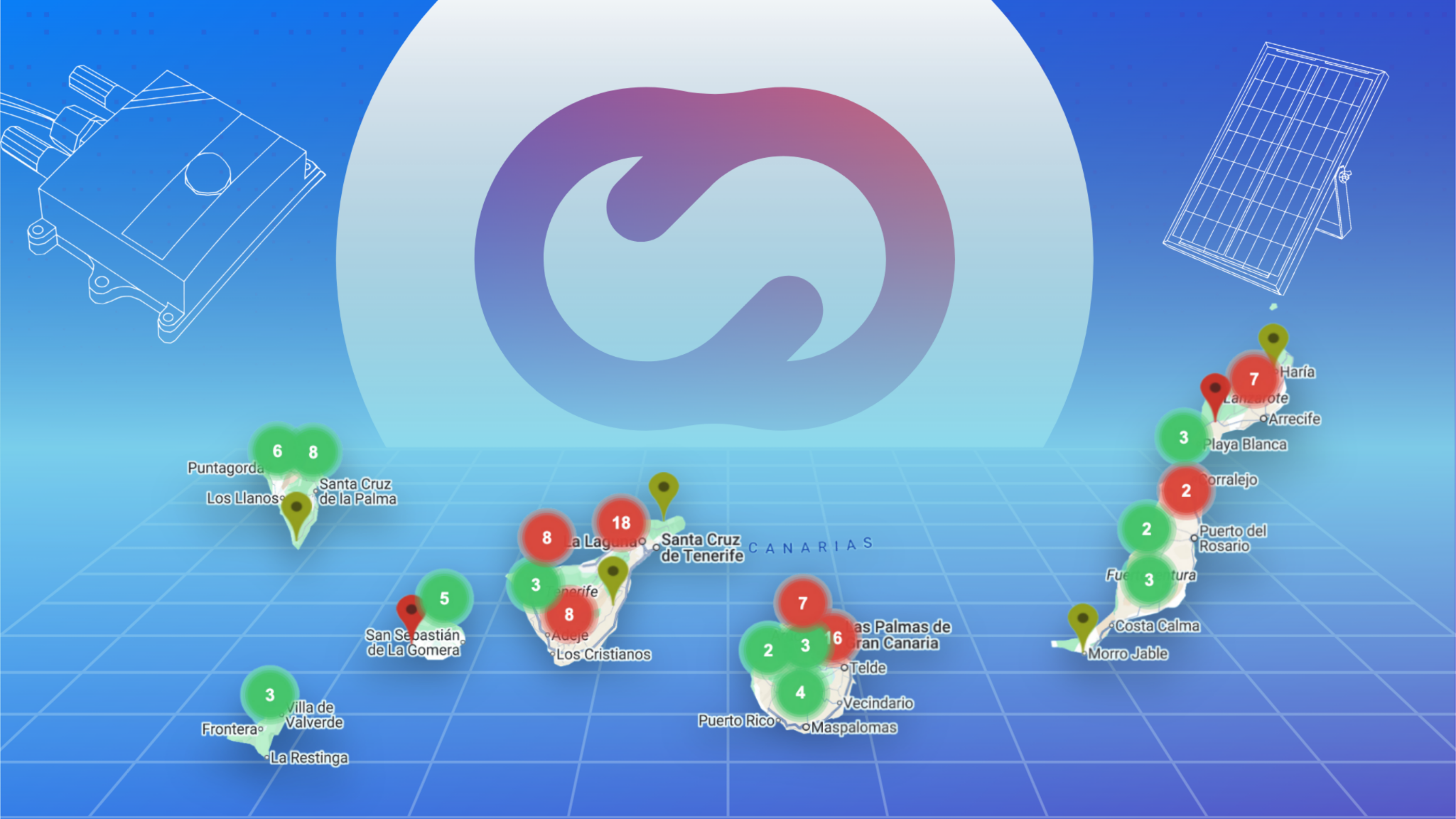A Bridge Between the Past and the Future

In the heart of Tarragona, a place where the echoes of the Roman Empire still resound powerfully, lies the Paleochristian Necropolis of Tárraco, a cemetery dating from the 3rd to 5th centuries AD, silently bearing witness to thousands of stories. Today, this site, recognized as a UNESCO World Heritage Site, is undergoing one of the most ambitious transformations in its recent history. Here, where every stone tells a story, cutting-edge technology joins hands with archaeology. This article narrates not just a technological success story, but the deployment of a comprehensive IoT monitoring solution for heritage preservation, proving that innovation can and must be the greatest ally in protecting our cultural legacy. It is a prime example of how monitoring systems can serve as a vital tool in safeguarding heritage during complex restoration works.
Cloud Studio IoT and its partners have had the privilege of taking part in this multifaceted restoration project by implementing a monitoring system that transforms a conventional restoration into a smart, connected operation.

The Tárraco Necropolis: A Historical Treasure in Full Transformation
The Tárraco Necropolis is no ordinary archaeological site. Discovered in the early 20th century during the construction of a tobacco factory by a Tabacalera company, it was revealed to be one of the most significant late Roman open-air burial complexes in the western Mediterranean. After decades of study and partial openings, the site was closed in 2020 for an unprecedented comprehensive rehabilitation funded by Next Generation EU funds, with an investment exceeding 9 million euros. This ambitious initiative highlights the growing importance of protecting historical heritage through innovation, planning, and sustainable intervention.

The goal is monumental: to reopen the fully renovated museum in 2027, nearly 35 years after its original closure, with an exhibition design that honors its history and reconnects the site with the city. This involves restoring buildings and protective structures, creating a new narrative experience, and integrating spaces like underground crypts. During this complex process involving heavy machinery, workers, and the management of resources like water and electricity, the critical question arises: How can the restoration work itself avoid endangering the very heritage it seeks to preserve?
The Challenge: Protecting Priceless Legacy During Restoration
 A restoration project of this magnitude demands precision and precision requires IoT sensors. Vibrations, humidity changes, temperature fluctuations, or uncontrolled resource use can not only affect budgets and timelines but also cause irreversible damage to structures and artifacts nearly two millennia old. Preventive conservation becomes the core of the project. Reacting to issues isn’t enough; real-time environmental and operational monitoring is essential.
A restoration project of this magnitude demands precision and precision requires IoT sensors. Vibrations, humidity changes, temperature fluctuations, or uncontrolled resource use can not only affect budgets and timelines but also cause irreversible damage to structures and artifacts nearly two millennia old. Preventive conservation becomes the core of the project. Reacting to issues isn’t enough; real-time environmental and operational monitoring is essential.
Technology in Service of History
To meet this challenge, Cloud Studio IoT designed and deployed an end-to-end solution combining cutting-edge hardware, LoRaWAN connectivity, and our powerful IoT platform. The objective: to actively and accurately monitor work conditions, ensuring both project quality and heritage protection.

Sensors for a Controlled Environment and Efficient Consumption
- Indoor Environment Sensor (DecentLab DL-IAM): This device is essential for measuring variables such as temperature and relative humidity within work and storage areas. Controlling the environment is crucial to prevent the degradation of sensitive materials and to ensure optimal conservation conditions even in the midst of ongoing construction.

Window where one of the DecentLab DL-IAM ambiance monitor sensors was installed. - Ultrasonic Water Meter (BECO X): Water management is a key factor both in terms of cost and safety. Leaks or unexpected consumption can lead to moisture issues that severely impact the archaeological site. This ultrasonic sensor enables precise, non-invasive, real-time monitoring of water usage.

- Power Consumption Meter (Milesight UC100 + Circutor CVM-E3-Mini): Energy is another vital resource on any construction site. This combination of devices allows for monitoring the electrical consumption of machinery and facilities. It not only helps optimize energy costs but also enables the detection of anomalies in equipment performance that could indicate potential safety issues.

- Gateway (Milesight UG67): To complete the connectivity infrastructure, this robust outdoor gateway was installed. It is responsible for collecting all LoRaWAN signals from the sensors and acting as a bridge to securely transmit the data to our cloud platform, Gear Studio.

From Data to Decisions: Connectivity and Platform
Sensor data is transmitted via The Things Network using LoRaWAN. All data is centralized, processed, and visualized on the Cloud Studio IoT Platform, offering custom dashboards, real-time alerts, and historical analytics all without code, ready to use.

On-Field Experience: The Critical Role of the Integrator
From the perspective of a platform provider, the elegance of the technology and the ease of use of the software are often emphasized. However, the IoT value chain is much more than that. The true success of a project is forged in the field at the moment of installation. That is why, on this occasion, we decided to step out of our comfort zone. Our CEO, Joaquín Cervera, and his collaborator Francisco Rojas, a FIWARE expert, personally traveled to the Necropolis to experience the integrator’s role firsthand.

We don’t want to speak of the installation merely as a success story; we want to take this opportunity to highlight the role of the engineer and the field technician. They are the ones who face the unpredictable realities of a physical environment. A plan drafted in an office may seem flawless, but true challenges emerge on-site: Where can a reliable power source be found? What is the best route to run cabling without being invasive or disrupting other services? What kind of support can be used to mount a sensor at the perfect angle?

This on-field experience reminded us of a fundamental lesson: implementation is not a walk in the park. The real-world environment is far less predictable than an email thread. The greatness of LoRaWAN and the power of a cloud platform only come to life through the ingenuity, expertise, and problem-solving skills of the person on the ground. At Cloud Studio IoT, we’re proud to say that we strive to be present at every stage of the end-to-end process because only by valuing every link in the chain can a truly robust and reliable solution be built.
Beyond a Success Story: The Strategic Value of IoT Monitoring in Heritage

The Tárraco Necropolis project exemplifies the potential of Smart Heritage, a growing field leveraging IoT for preventive and predictive conservation.

Thanks to sensors, archaeologists can:
- Anticipate Risks: Detect micro-environmental changes that could cause long-term damage.
- Optimize Resources: Manage water and energy use efficiently.
- Make Data-Based Decisions: Justify actions with historical and real-time data.
- Ensure Safety During Construction: Protect heritage during renovations.

This application of IoT in this sector aligns with the global trend toward heritage digitalization, including digital twins of historical sites that enable not only their study and remote monitoring through dashboards like those of Cloud Studio IoT, but also new ways of dissemination and virtual access for the public.
From Concept to Reality: Building the Future of the Past
While the IoT world often promises billions of connected devices, its real value shines in projects like this. Here, technology becomes a powerful tool in the service of protecting invaluable cultural heritage. The installation at Tárraco shows that IoT has matured from hype to high-impact reality.
This is not just a story about sensors and platforms it’s about bridging the past and the future, about field and strategy working hand in hand. At Cloud Studio IoT, we remain committed to that holistic vision: preserving history while writing a smarter, more connected future.




